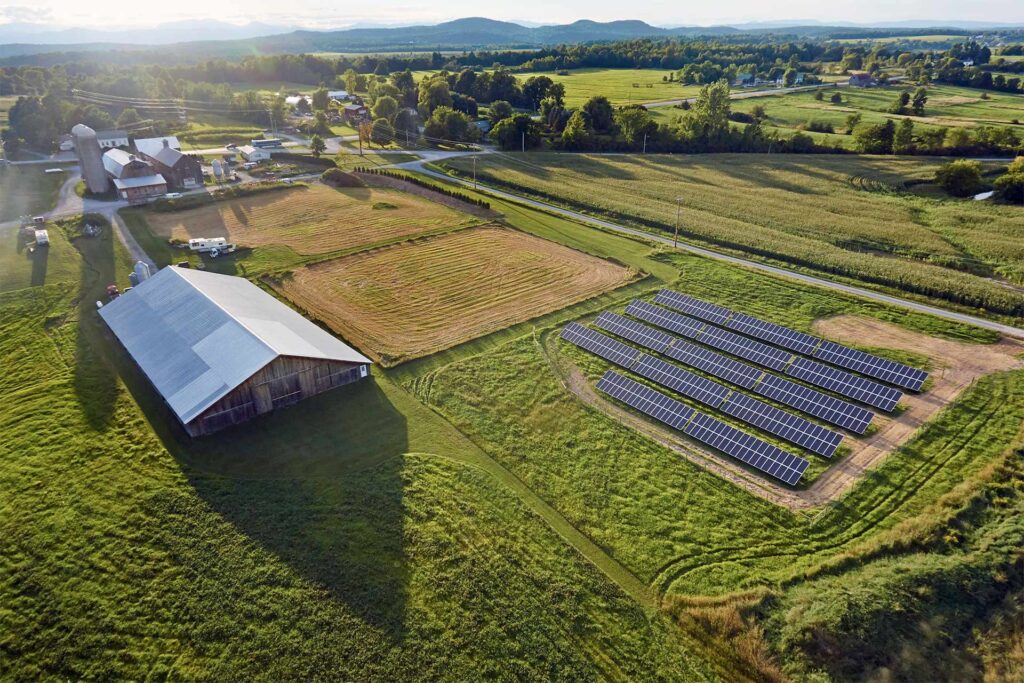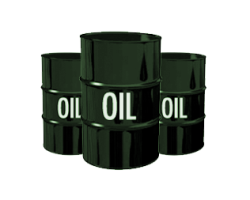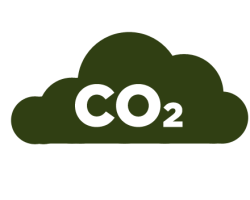
This piece was originally published on VTDigger in 2022
Our country is increasingly moving towards a decarbonized economy. Scientists now predict that farmers and other landowners will lease more than 2 million acres of land in the U.S. for community and utility scale photovoltaic solar projects by 2030. This represents a significant increase from the estimated 300,000 acres of farmland hosting solar projects today. The impacts and disruption of climate change are driving growing demands for both energy and food security, and the need to accelerate the energy transition toward a low carbon energy future is fueling the exponential growth in the deployment of solar energy generation assets. The Solar Energy Technologies Office of the U.S. Department of Energy and new research from scientists at the National Renewable Energy Laboratory (NREL) on “low-impact” solar development designs that provide dual-uses and co-benefits to agriculture and ecosystems underscore the viability of sustainable land use and solar development. The NREL study, named InSPIRE, also shows how low-impact solar designs can reduce costs and increase solar generation efficiency because of reduced mowing and the creation of a cooler microclimate under the panels, which affords greater energy production. The concept of “agrivoltaics” is rapidly gaining traction across the country in response to the increased demand for solar electric generation powering the energy transition. In short, agrivoltaics allow a given area to harvest the sun not only once, but twice — as fuel for crops and as a source of renewable energy.
Vermont needs local solar projects

Here in Vermont, the Global Warming Solutions Act (GWSA) of 2020 has legally mandated emissions reductions from our state’s energy, transportation, thermal and industrial sectors that will result in a greater than two-fold increase in the state’s electrical consumption, before population growth considerations. Given the emission reduction targets outlined in the GWSA, the vast majority if not all of that additional generation will need to come from clean renewable energy resources. And due to the extreme challenges associated with delivering new sources of land-based wind energy in Vermont and in consideration of the fact that offshore wind resources in the Northeast are likely a decade away from being available to Vermont, nearly all of that generation will need to come from in-state solar, combined with energy storage to store and subsequently deliver clean energy at times when the sun is not shining. Simple math points to the need for up to 300MW of new solar per year in Vermont over the next decade to meet the requirements of the GWSA. Meeting this demand will require approximately 2,000 acres of land per year, or 20,000 acres over the next decade.

It’s important to put these numbers into context: 20,000 acres represents 0.3% of Vermont’s total land area. However, much of that land is forested, and thus well positioned for a future that puts financial value on carbon sequestration. As such, in addition to rooftops, brownfields and landfills, we will need to leverage existing, cleared agricultural land to support the significant buildout of solar generation resources. This can be a win-win for the agricultural community in Vermont, long suffering from a declining dairy market, by providing both energy and lease revenue to support on-farm agricultural business activity. Additionally, there is increasing awareness and emerging research supporting improved crop production in the presence of the partial shading afforded by co-locating agricultural crops with solar arrays, resulting in additional revenue potential for farmers.
Solar friendly pollinators are a win-win-win

An operational solar plus agriculture project also offers additional benefits for the State of Vermont’s environment and future food security. One example includes utilizing pollinator friendly ground cover for vegetation management at solar arrays which can result in significantly improved ecosystem service values when compared to business as usual agricultural practices including pasture for dairy herds and hay and/or corn silage crops. Academic researchers point to solar projects completed with either native grassland or pollinator friendly ground cover as producing a 3-fold increase in pollinator supply along with increases in sediment and water retention of over 95% and 19%, respectively, as compared to turf grass ground cover. This also includes an estimated 65% increase in carbon storage potential which, when factoring in the future monetization of carbon sequestration, can provide yet another additional revenue stream for farmers.
Agrivoltaics also support our increasing need for food security here in Vermont by providing critical habitat for native pollinators. Butterflies, hummingbirds, moths, bees and other insects that move pollen from plant to plant, provide a sustainable reproductive pathway for many of the fruits, vegetables, nuts and plants that we rely on for sustenance. Unfortunately, these valuable animals are being crowded out by our growing human population that has more than doubled over the past 50 years to 7.5 billion and is expected to reach 10 billion by 2050. This population growth has destroyed much of the critical habitat for pollinators, which combined with widespread use of pesticides and herbicides, has had devastating impacts on our local pollinator population. Here in Vermont, there were 17 species of bumblebees 25 years ago. We are now down to 10 species, and seven of these are endangered, including the previously common rusty patched bumblebee, whose population has plummeted 87 percent since the late 1990s and has recently been declared an endangered species.

As we move to a more localized, more secure food production system, it will be critical to protect the health of all remaining pollinator species to ensure the future health of our agricultural land. Honey bee pollination alone can add more than $15 billion in value to agricultural crops in the U.S.
The co-location of solar generation projects and agricultural production on Vermont’s cleared agricultural lands provides numerous social, environmental and economic benefits to our state. At a time that our local dairy industry is faced with challenge after challenge, we need to find solutions that provide our hard working farmers with opportunities to diversify revenues. Our farmers are the true stewards of Vermont’s iconic working landscape and are as entrepreneurial and creative as any business out there. As such, providing them with additional tools to de-risk and diversify farming operations so as to maintain financial viability for our agricultural sector is critical to the state economy. From 1969 to 2020, Vermont lost nearly 3,400 individual dairy farms as production has largely been ceded away from small families into large, agri-business operations. We can reverse this trend by giving local Vermont farmers additional resources to maintain our working landscape while increasing carbon sequestration, reducing the phosphorus-laden stormwater runoff that is choking our lakes and waterways, improving soil quality and maintaining food security for our state and region well into the future. The solar industry is poised to help by deploying the capital required to make these improvements.
The solar harvest is underway

At Encore Renewable Energy, we began deploying pollinator friendly ground cover at our projects back in 2017. A survey of pollinator populations at an early Encore demonstration project in Middlebury, Vermont shows a greater than 5-fold increase in unique pollinator populations in just one year. And at the end of 2020, we announced an initiative to deploy over 200 acres of pollinator-friendly habitat across 14 solar projects representing 28MW of solar capacity across Vermont and Maine. To date, over a dozen of our solar arrays have pollinator-friendly ground cover and/or vegetation management via flocks of sheep and we’re committed to including pollinator friendly habitat and/or sheep grazing at all of our solar projects going forward, providing our agricultural landowner partners with the ability to harvest the sun alongside their regular crops, while also benefiting the greater community in which these projects are located.
All photos of projects developed by Encore Renewable Energy







 The team at Encore Renewable Energy® is proud to be certified as a B Corp, joining over 3,500 other businesses worldwide who also share a commitment to social and environmental performance, accountability and transparency.
The team at Encore Renewable Energy® is proud to be certified as a B Corp, joining over 3,500 other businesses worldwide who also share a commitment to social and environmental performance, accountability and transparency.